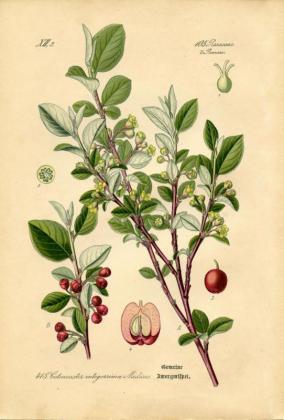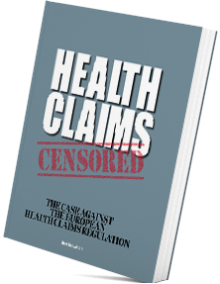In an Overview Report regarding the “Controls of Food Supplements,” [i] DG(SANTE) surprisingly disqualifies itself by completely ignoring European regulations concerning the control of food supplements containing “botanicals.” According to the Report’s authors “botanical” food supplements are “not regulated in the EU.”
“Not regulated in the EU” ? For anyone genuinely involved in the “control” of “botanicals” – manufacturers, distributors, authorities alike – it’s impossible not to know or ignore Regulation 1925/2006/EC, which provides under Article 1:
“This Regulation harmonises the provisions laid down by law, regulation or administrative action in Member States which relate to the addition of vitamins and minerals and of certain other substances [such as “botanicals”] to foods, with the purpose of ensuring the effective functioning of the internal market, whilst providing a high level of consumer protection.”
Why harmonization was necessary, is explained in the first Recital of this Regulation, where the situation that existed before 2006 is described as follows:
“There is a wide range of nutrients and other ingredients that might be used in food manufacturing, including, but not limited to, vitamins, minerals including trace elements, amino acids, essential fatty acids, fibre, various plants and herbal extracts. Their addition to foods is regulated in Member States by differing national rules that impede the free movement of these products, create unequal conditions of competition and thus have a direct impact on the functioning of the internal market. It is therefore necessary to adopt Community rules harmonising national provisions relating to the addition of vitamins and minerals and of certain other substances to foods.”
So, in 2006, the differing national rules that impeded the free movement of these products, created unequal conditions of competition and thus had a direct impact on the functioning of the internal market were replaced by harmonized Community rules relating to the addition of vitamins and minerals and of certain other substances to foods laid down in Regulation 1925/2006/EC, which is … indeed … a Regulation. A European Regulation has the force of annulling and replacing all national provisions laid down by law, regulation or administrative action in Member States that fell within the scope and subject matter of that Regulation. That’s what Regulations do. They regulate things in the EU.
Hence, since 2006, with regard to controls on “botanicals” and other “other substances,” the harmonised procedure laid down in Article 8 of Regulation 1925/2006/EC shall be followed by all authorities of all Member States …
“… where a substance other than vitamins or minerals, or an ingredient containing a substance other than vitamins or minerals, is added to foods or used in the manufacture of foods under conditions that (1) would result in the ingestion of amounts of this substance greatly exceeding those reasonably expected to be ingested under normal conditions of consumption of a balanced and varied diet and/or (2) would otherwise represent a potential risk to consumers.” (numeration added)
Not so according to DG(SANTE)’s authors of the Report. In so many words, they repeated the first Recital of Regulation 1925/2006/EC, as if that Regulation never saw the light of day:
“The use of substances other than vitamins or minerals (such as plants and their preparations) in the manufacture of FSs is not regulated in the EU. The principle of mutual recognition applies in the case of botanical products that are legally sold and marketed in one Member State. A Member State may prohibit the marketing only if justified by one of the public interest grounds set out in Article 36 of the Treaty on the Functioning of the European Union, such as the protection of health and life of humans.”
No, DG(SANTE) ! This is precisely the situation that, in 2006, led to the adoption and enactment of Regulation 1925/2006/EC, which harmonised the differing national provisions, so that throughout the EU the control on the use of “other substances” would take place in a uniform manner. The harmonization of the national control-procedures also effectively removed the trade barriers that existed before the harmonization, especially since the harmonized control-procedure included the application of a uniform assessment of the available information by the European Food Safety Authority (EFSA). [ii]
EFSA’s involvement in the harmonized control-procedure excludes that differences between national safety assessments would still cause differences in outcomes of such assessments and, as a consequence, problems in the field of mutual recognition.
The mutual recognition situation doesn’t exist anymore and we don’t need a copy of the Regulation that created a level playing field in terms of the safety of “other substances” used in food supplements. A Member State shall follow the harmonised Article 8 procedure where an “other substance” is added to foods or used in the manufacture of foods under conditions that (1) would result in the ingestion of amounts of this substance greatly exceeding those reasonably expected to be ingested under normal conditions of consumption of a balanced and varied diet and/or (2) would otherwise represent a potential risk to consumers.
Adding omission to neglect, DG(SANTE)’s authors also don’t seem to be aware of their own Commission Implementing Regulation 307/2012/EU of 11 April 2012, “establishing implementing rules for the application of Article 8 of Regulation (EC) No 1925/2006 of the European Parliament and of the Council on the addition of vitamins and minerals and of certain other substances to foods.”
Recital 1 of Regulation 307/2012/EU provides:
“Requests by Member States or on the initiative of the Commission, to initiate the procedure under Article 8(2) of Regulation (EC) No 1925/2006 to prohibit, restrict or place under Union scrutiny a substance other than vitamins or minerals, or an ingredient containing a substance other than vitamins or minerals that is added to foods or used in the manufacture of foods should meet certain conditions and uniform rules should be established for checking that these conditions are met. One of the conditions laid down in Article 8(1) of Regulation (EC) No 1925/2006 is that the intake of the substance should greatly exceed normal intake of a balanced and varied diet and it should present a potential risk to consumers as demonstrated by relevant scientific data. Further, Article 8(1) of Regulation (EC) No 1925/2006 provides that the procedure should also be applied where the substance presents a potential risk to health for reasons other than a great excess of its normal intake. In addition, Article 8(1) of Regulation (EC) No 1925/2006 provides that the substance should be added to foods or used in the manufacture of foods.”
It is unlikely that the DG(SANTE) authors of the Overview Report were unaware of the harmonised provisions laid down in Regulations 1925/2006/EC and 307/2012/EU. Which makes one wonder why they would so grossly misprepresent the current situation as one still ruled by national provisions, mutual recognition and Article 30 TEC, which preceded Article 36 TFEU. Nowhere in the Report is there any mention of said Regulations. It is as if they don’t exist or somehow evaporated into thin air.
Instead, DG(SANTE) commends France, Italy and Belgium for having been “at the forefront of the work on plants and their preparations.” The “Belfrit” project is praised as an “example of good practice,” even though it creates potential barriers to trade by ignoring the Article 8 procedure. The German “review of the safety of more than 600 plants and plant parts (botanicals)” is also hailed as an “example of good practice,” even though it creates potential barriers to trade by misconstruing and abusing the Article 8 procedure.
How do these “good practices” disturb the functioning of the internal market ? In its conclusion of the Botanicals section of its Report, DG(SANTE) itself tells us: “…, some MSs started working on lists of botanicals, individually or together. This can result in differences in the outcome of risk assessment.” Good practices, but they result in different outcomes.
To prevent and abolish such differences in the outcomes of risk assessments, the European legislature enacted Regulation 1925/2006/EC, which provides that, as part of the Article 8 safety-control-procedure, EFSA shall appy a uniform risk assessment. But, when Member States stubbornly refuse to apply that harmonised procedure, they consciously, deliberately and retroactively create a pre-2006 situation and an inevitable impairment of the functioning of the internal market.
Somehow, DG(SANTE) is enamored by the national initiatives that constitute a clear and conscious by-pass of European regulations. Haven’t these Member States read Regulation 1925/2006/EC ? Oh yes, they did. You see, instead of loyally applying the procedure laid down in Article 8, they cherry picked another Article to mess up the internal market. Under Article 12, which permits Member States to notify the Commission and the other Member States if they consider it necessary to “adopt new legislation,” they “notified” the Commission and their fellow Member States of their envisaged violations of Article 8 of the Regulation
When a Member State envisages the adoption of “new legislation” in a field that is fully harmonised, in this case by adopting a new national control-procedure concerning the safety of “other substances,” that Member State must above all explain why its “example of good practice” should annul and replace the harmonized provision and how it’s installing of national barriers to trade serves the functioning of the internal market.
Per paragraph 2 of the “notification” Article, “[t]he Commission shall consult the Committee referred to in Article 14(1), [iii] if it considers such consultation to be useful or if a Member State so requests, and shall give an opinion on the envisaged [notified] measures.” Guess who sit in that Committee ? Indeed, representatives of the violating Member States. Meaning that the Commission must consider whether it considers it useful to consult the violators.
With the Commission’s Report on Controls on Food Supplements in the public arena, what’s there to consider, when the Commission praises as “good practices” the national provisions that cause differences in the outcome of risk assessment and impair existing harmonized provisions and the functioning of the internal market.
Perhaps, the Commission should consider the adoption of a Regulation that “harmonises the provisions laid down by law, regulation or administrative action in Member States which relate to the addition of vitamins and minerals and of certain other substances to foods, with the purpose of ensuring the effective functioning of the internal market, whilst providing a high level of consumer protection.” All it needs to do is copy-paste Regulation 1925/2006/EC with the addition of the explicit provision that Member States are not exempt from executing it.
Bert Schwitters
[i] Overview Report on a Series of Fact Finding Missions carried out in Member States in 2013 and 2014 in order to gather Information regarding the Controls of Food Supplements. DG(SANTE) 2015-7186 – MR. 19/06/2015.
[ii] Article 8.2 of Regulation 1925/2006/EC.
[iii] The Standing Committee on the Food Chain and Animal Health.




